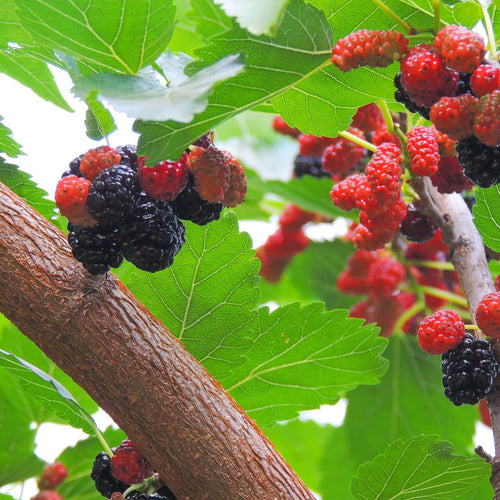A mulberry tree is a leafy deciduous ornamental tree with leaves similar to the famous silk tree. Several species have beautiful white or pink flowers in spring (March, April), which turn into berries by summer by fall. Mulberries are broadleaf plants and can grow up to 60 feet, depending upon the species.
How Do You Take Care Of Mulberry Trees?
Mulberry trees should be watered deeply once every two weeks during their first year to encourage root growth and help them become established in their new environment. Mulberry trees should also be kept well-pruned to prevent overgrowth and ensure that sunlight reaches the trunk and roots of the tree.
How Much Sunlight Can A Mulberry Tree Take?
Mulberry trees need at least 6 hours of sunlight each day during the summer months (May-September). During the winter months (October-April), they need 4 hours of sunlight per day.
Do Mulberry Trees Back Up Every Year?
Mulberry trees do not back up yearly, but they need additional nitrogen fertilizer during spring to produce fruit buds later in the year.
What Does A Mulberry Tree Look Like?
The leaves of the mulberry tree are alternate and pinnately compound, with 5-7 leaflets per leaf. The leaflets are elliptical and serrated along the edges. They turn yellow in the fall and drop off before winter sets in.
Where Does a Mulberry Tree Grow?
Mulberry trees are native to temperate regions, including Asia, Europe, and North America. Mulberry trees thrive in full sun or partial shade and prefer moist soil with good drainage. You can find them growing in many different environments, such as forests, river banks, and urban areas.
What Are The Environments In Which Mulberry Trees Grow?
Mulberry trees grow well in USDA zones 5 through 8. They will not survive temperatures below -15 degrees Fahrenheit (-26 degrees Celsius). Mulberries do not tolerate dry conditions well and should be watered regularly during dry spells.
Are Mulberry Trees Toxic?
No, mulberries are not toxic to humans or other animals. However, they contain oxalic acid, which can irritate if consumed in large amounts if consumed.
How Do You Grow A Mulberry Tree?
Like most plants and trees, mulberries need water, sunlight, and nutrients to survive. If you plant them in the ground or a container, ensure they get at least six hours of full sun per day.
How Do You Care For Mulberry Trees?
Prune your mulberry tree lightly after it has bloomed so it does not produce too much fruit and becomes too heavy for its branches.
How Did Mulberry Trees Get Their Name?
The name "mulberry" comes from the Latin word morus, which means oddly enough.


















































